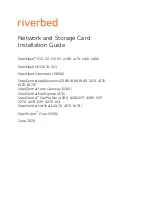
93/163
uPSD3212A, uPSD3212C, uPSD3212CV
PSD MODULE DETAILED OPERATION
, the PSD MOD-
ULE consists of five major types of functional
blocks:
■
Memory Block
■
PLD Blocks
■
I/O Ports
■
Power Management Unit (PMU)
■
JTAG Interface
The functions of each block are described in the
following sections. Many of the blocks perform
multiple functions, and are user configurable.
MEMORY BLOCKS
The PSD MODULE has the following memory
blocks:
■
Primary Flash memory
■
Secondary Flash memory
■
SRAM
The Memory Select signals for these blocks origi-
nate from the Decode PLD (DPLD) and are user-
defined in PSDsoft Express.
Primary Flash Memory and Secondary Flash
memory Description
The primary Flash memory is divided into 4 sec-
tors (16KBytes each). The secondary Flash mem-
ory is divided into 2 sectors (8KBytes each). Each
sector of either memory block can be separately
protected from Program and Erase cycles.
Flash memory may be erased on a sector-by-sec-
tor basis. Flash sector erasure may be suspended
while data is read from other sectors of the block
and then resumed after reading.
During a Program or Erase cycle in Flash memory,
the status can be output on Ready/Busy (PC3).
This pin is set up using PSDsoft Express Configu-
ration.
Memory Block Select Signals
The DPLD generates the Select signals for all the
internal memory blocks (see
Each of the eight sectors of the primary Flash
memory has a Select signal (FS0-FS3) which can
contain up to three product terms. Each of the 2
sectors of the secondary Flash memory has a Se-
lect signal (CSBOOT0-CSBOOT1) which can con-
tain up to three product terms. Having three
product terms for each Select signal allows a given
sector to be mapped in Program or Data space.
Ready/Busy (PC3). This signal can be used to
output the Ready/Busy status of the Flash memo-
ry. The output on Ready/Busy (PC3) is a 0 (Busy)
when Flash memory is being written to,
or
when
Flash memory is being erased. The output is a 1
(Ready) when no WRITE or Erase cycle is in
progress.
Memory Operation. The primary Flash memory
and secondary Flash memory are addressed
through the MCU Bus. The MCU can access these
memories in one of two ways:
–
The MCU can execute a typical bus WRITE or
READ
operation
.
–
The MCU can execute a specific Flash
memory instruction that consists of several
WRITE and READ operations. This involves
writing specific data patterns to special
addresses within the Flash memory to invoke
an embedded algorithm. These instructions
are summarized in Table
Typically, the MCU can read Flash memory using
READ operations, just as it would read a ROM de-
vice. However, Flash memory can only be altered
using specific Erase and Program instructions. For
example, the MCU cannot write a single byte di-
rectly to Flash memory as it would write a byte to
RAM. To program a byte into Flash memory, the
MCU must execute a Program instruction, then
test the status of the Program cycle. This status
test is achieved by a READ operation or polling
Ready/Busy (PC3).
www.BDTIC.com/ST
















































